Does AGS Has Lax Clarity/Color Grading Standards vs GIA?
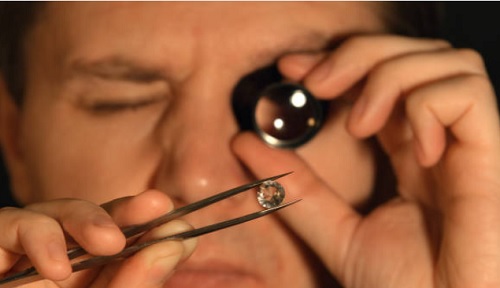
When it comes to buying diamonds, a reliable and accurate grading report is mandatory. Even though I’m a GIA trained grader myself, I will only buy diamonds graded by GIA or AGS when I go shopping.
You see, the grading reports protect consumers like you and me by offering an impartial assessment of the diamond’s quality. If you are shopping for an engagement ring, I recommend you to do the same if you don’t want to get ripped off by unethical jewelers.
Recently, I’ve received several questions about the differences in color/clarity grading between the 2 labs and claims that AGS is softer in their standards compared to GIA.
Question: I’ve been reading your website for the past 2 weeks and I know that no two diamonds are the same. Based on your recommendation, I started looking through James Allen for a round diamond in the 1.50 carat range.
In their True Hearts selection, I came across this particular SI1 diamond graded by AGS and I’m pretty surprised to see obvious inclusions showing up in the magnified photographs. I spent the next hour browsing through the entire collection of SI1 True Hearts stones and this is the only stone that stood out like a sore thumb.
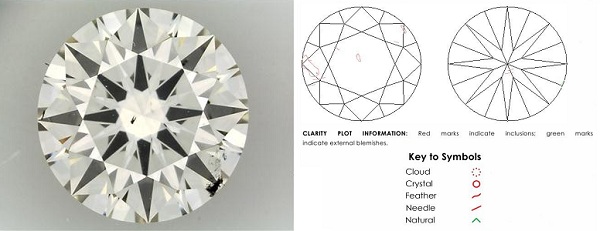
Why does this SI1 diamond have obvious inclusions?
I read online that SI1 diamonds are eyeclean and other GIA certified diamonds I looked at didn’t display such obvious inclusions. I’ve also heard from my local jeweler that AGS is soft in their grading standards and that I should buy GIA instead.
Did AGS make a mistake with this diamond or are generally more lax as compared to GIA?
Paul’s Reply: There’s a lot of misinformation found on forums and other websites about SI1 diamonds always being eye clean. This particular diamond is a fine example which shows why you need to be wary of what you read.
As you have said, every diamond is different. When it comes to buying diamonds in the slightly included ranges, it is imperative for you to see exactly how the diamond looks like. And the best ways to do so are via magnified videos or images.
To answer your question, I don’t think that AGS has made a mistake in rating this an SI1 stone. The major inclusion is found at the edge of the diamond (at 4 o’clock) and it is dark black in color. Given the carat size, location and relief of the cloud inclusions, I think AGS made the right call.
Case Study: GIA vs AGS Grading Standards – Which is Better?
I will go on record to say that both GIA and AGS have similar standards for both color/clarity grading. When jewelers bash AGS, that’s usually because they have an agenda and a vested interest in selling you a GIA diamond with mediocre cut quality.
Due to the way grading is performed in the lab by a human, there will always be slight variances across a specific color or clarity grade. This is because every diamond is different and the nature of their inclusions is unique.
Just as someone could show an example of an AGS diamond with SI1 clarity that isn’t eyeclean, I could easily pick out a GIA diamond with similar specs that isn’t eyeclean to prove a point. Look at both diamonds below to view them in HD videos…
GIA vs AGS diamond clarity grading standards comparison
Clearly, the AGS diamond is eyeclean while the GIA diamond isn’t. So, would it be correct or wrong to say that GIA is stricter?
In fact, both had been accurately graded as SI1. That’s because slight variances can be allowed to exist within a clarity grade because each diamond is different!
I will reiterate; both AGS and GIA are highly authoritative sites and are on par with each other. Now, I hope to bust the myth and misinformation that AGS is more lenient than GIA once and for all with another real life comparison.
Comparison of 1 carat GIA vs AGS clarity grading standards
Is AGS looser in grading standards?
No!
Was GIA softer?
No!
Again, both of these diamonds contain inclusions that are accurately graded and it happens that these inclusions didn’t pose any issues with eyecleanliness.
Insider Tips to Shop for Lower Clarity Diamonds the Smart Way
Every single SI diamond especially those listed with cloud inclusions is required to be inspected for its appearance. This is because the clarity plot in a lab report only indicates the position and “size” of the cloud.
It fails to tell you the density or color (white/black) of the cloud. And in worse case scenarios, inclusions can cause issues with cloudy appearances. Likewise, the same precaution should be undertaken for other types of inclusions like feathers or crystals.
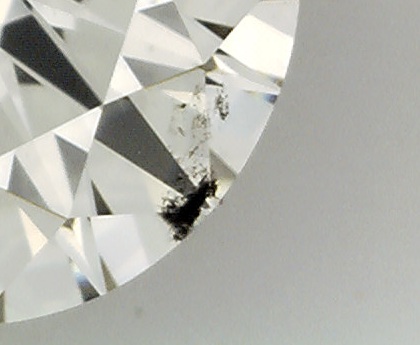
Dark black cloud that is visible to naked eye
Going back to the example you listed, the clouds are so dense that they create a dark patch which is visible to the naked eyes. With vendors that offer you HD videos and magnified images, it makes it easy for assessment.
To wrap things up, GIA and AGS are the only 2 labs in the entire world that grade consistently to the highest standards. Bear in mind that a clarity rating is not indicative of eyecleanliness and that it is important for you to see how the diamond looks like using tangible data.
Related Articles
Leave A Comment



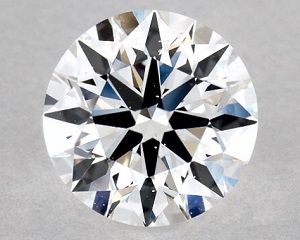


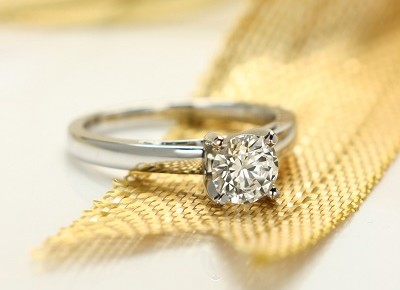
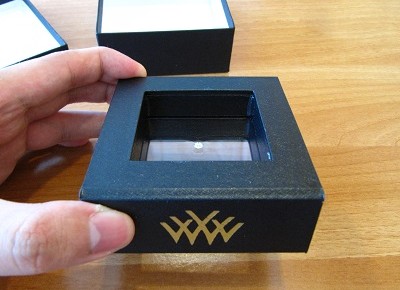
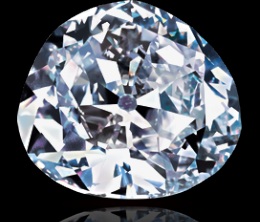









4 Comments
Your website is a truly refreshing read from many others that I had come across on the Internet. Thanks for contributing your knowledge and helping people like me who get really stressed up in buying diamond rings. Having read your comparisons of AGS vs GIA standards, I’m more convinced that I will be making the right choice with either lab.
It seems like the diamond above would be eyeclean since the inclusions lie at the edge of the stone. Couldn’t it be covered up with a prong?
I’m looking for a 3 carat engagement ring with a budget of $30000. Do you have any advice on determining eyecleanliness? Would an SI1 or SI2 grade be OK for a three ct diamond?
Apart from visual inspection, clarity grades are also assigned based on the relative size of inclusion to the stone. You can read this to find out what the differences in SI1 vs SI2 diamonds are.
When it comes to buying SI diamonds, it is often better to have an inclusion plot that looks messy rather than one with a single inclusion. This is because the probability of a single SI inclusion being noticeable is much higher compared to diamonds with inclusions that are well spread out.
This means larger stones with a VS clarity might not necessarily be eye clean. For example, a 5 carat stone with VS2 clarity might have an inclusion that can be visible to the naked eye. The same exact inclusion in a 0.5 carat stone might cause it to be graded as an SI2.
I think the diamond that was shortlisted is a very well cut stone based on its Idealscope image and computer generated ASET in the grading report. While the cloud inclusion is prong-able, my advice is to skip stones like this. There is no lack of better looking stones with a similar price point.
Eyecleanliness can be determined with some common sense and experience. This article should help as well: https://beyond4cs.com/clarity/resize-technique/
Hello! First I’d like to say thank you so much for your site and the immense amount of effort that must have gone into compiling all of the information.
After searching around, most of the other sources of information seem a bit biased and also not as complete or thorough as your content here is. Also, it’s really amazing how much energy you put into answering people’s questions in the comments (even reviewing their would-be purchases).
Just scrolling through all the years of comments on your different information pages, I see all the questions you’ve answered, EVEN when they’re the same questions that have been answered, repeatedly, many times already!
Secondly, I’ve got a question regarding a loose diamond I’m looking to purchase from James Allen for an engagement ring.
I see you’ve mentioned rejecting diamonds not in your ideal proportions (and I have been!), but I’m wondering how strictly this applies to the star length and lower girdle?
In my case, they are 47% and 76%, respectively.
Reference: https://www.jamesallen.com/loose-diamonds/round-cut/0.82-carat-i-color-si1-clarity-true-hearts-cut-sku-5561318
I’ve included the following specs for my diamond in case it helps in reviewing:
—
Certified: AGS 104100712001
Cut: Ideal
Color: I
Clarity: SI1
Weight: 0.828
Fluorescence: Medium Blue
Comments: “Additional clouds not shown”
Light Performance: 0
Polish: Ideal
Symmetry: Ideal
Table: 56.2%
Crown Angle: 34.1
Crown Height: 14.8%
Girdle: Faceted, 1.3% to 4.0%
Girdle Description: Thin to Slightly Thick, Faceted
Pavilion Angle: 40.6
Pavilion Depth: 42.7%
Star Length: 47%
Lower Girdle Length: 76%
Total Depth: 61.0%
Characteristic map includes: Crystal,Feather,Cloud
Culet: Pointed
—
I’m having a hard time finding much with your ideal proportions in the 0.7 – 0.89 carat range (even 0.9 – 0.99 is pretty slim). There, are, of course many, many, options in the 1+ carat range, but this is out of my budget if I want to retain quality in cut (and thus light performance).
Thanks again, it’s refreshing to find someone online contributing so genuinely the way you do! So, thank you so very much!
I’ve looked at the diamond here: https://www.jamesallen.com/loose-diamonds/round-cut/0.82-carat-i-color-si1-clarity-true-hearts-cut-sku-5561318
The star facet and lower girdle lengths are perfectly fine. I generally keep stars between 45-50% and 75-80%. It’s actually how the individual facets interact and comes together that really matter. And this is where the ASET image in the grading report and the idealscope image in the listing come in handy.
Now, this diamond is perfectly well cut. You clearly nailed your selection in terms of cut quality. BUT, the diamond isn’t eyeclean. The nasty black looking inclusion will be seen by the naked eyes.
I would ditch that stone. Instead, I did a search for you and would recommend these diamonds instead:
https://www.jamesallen.com/loose-diamonds/round-cut/0.73-carat-i-color-vs1-clarity-true-hearts-cut-sku-5331143
https://www.jamesallen.com/loose-diamonds/round-cut/0.71-carat-i-color-vs1-clarity-true-hearts-cut-sku-5451707
Both are eyeclean and MUCH better options than the diamond because of their eyecleanliness and cut quality.